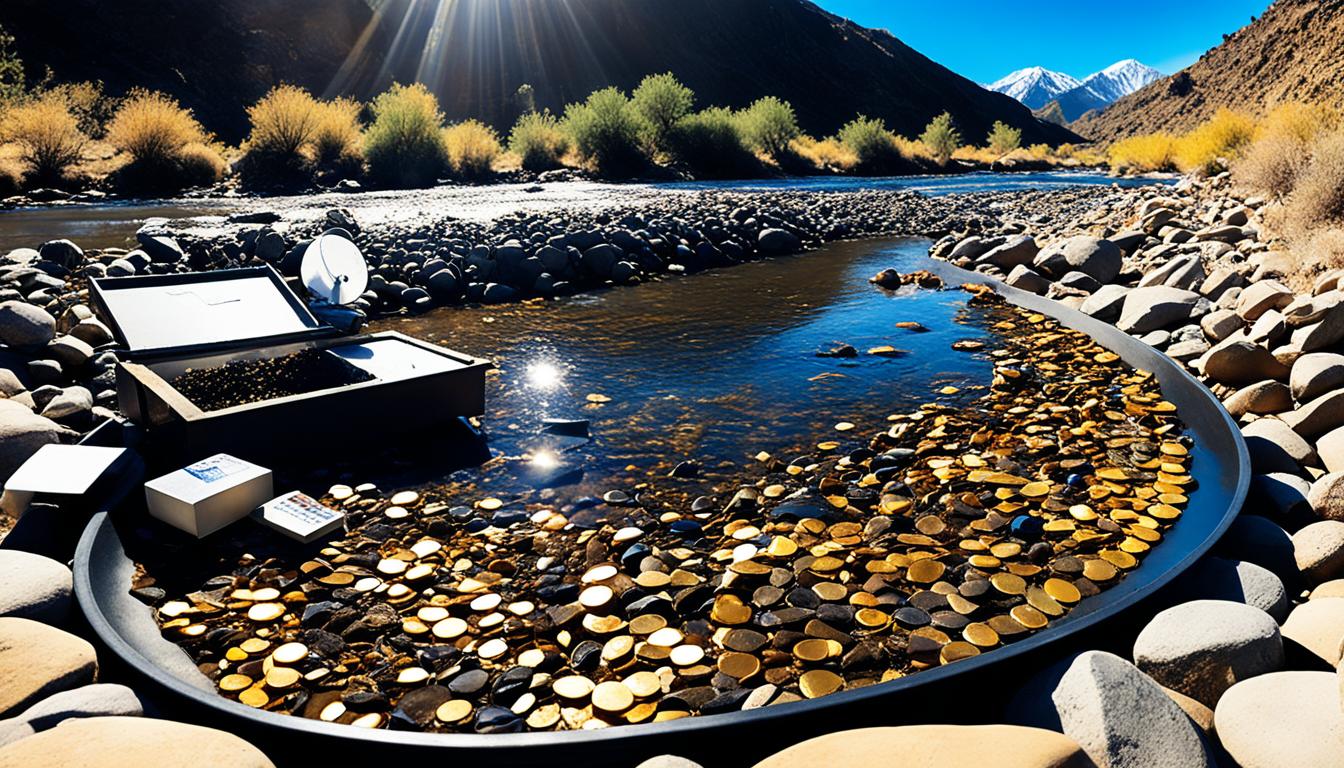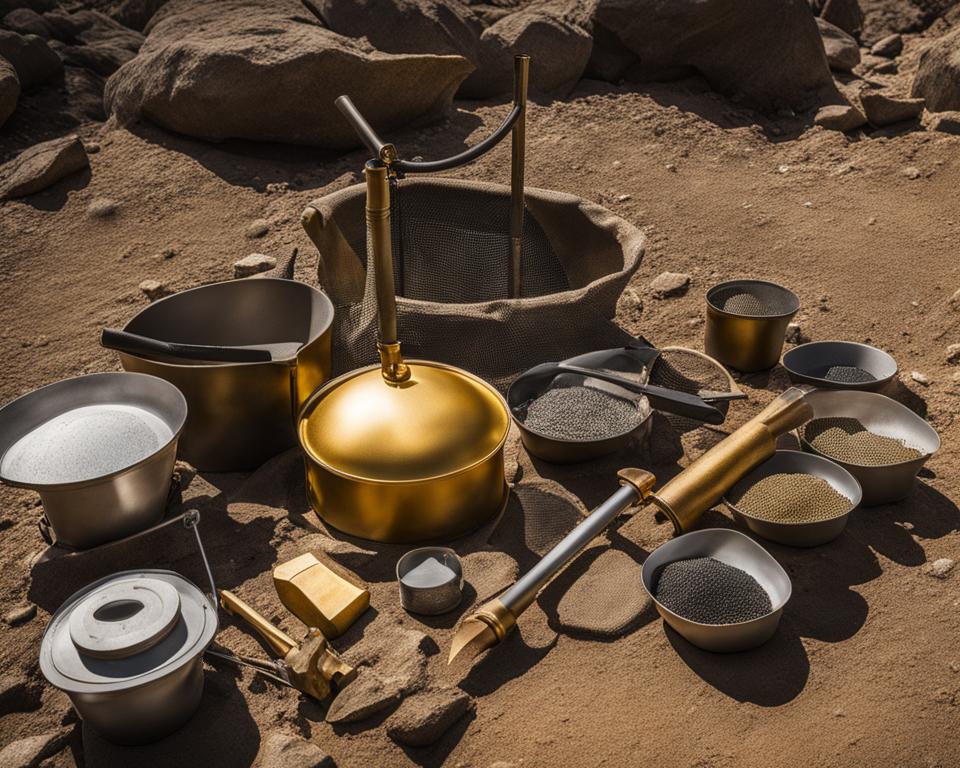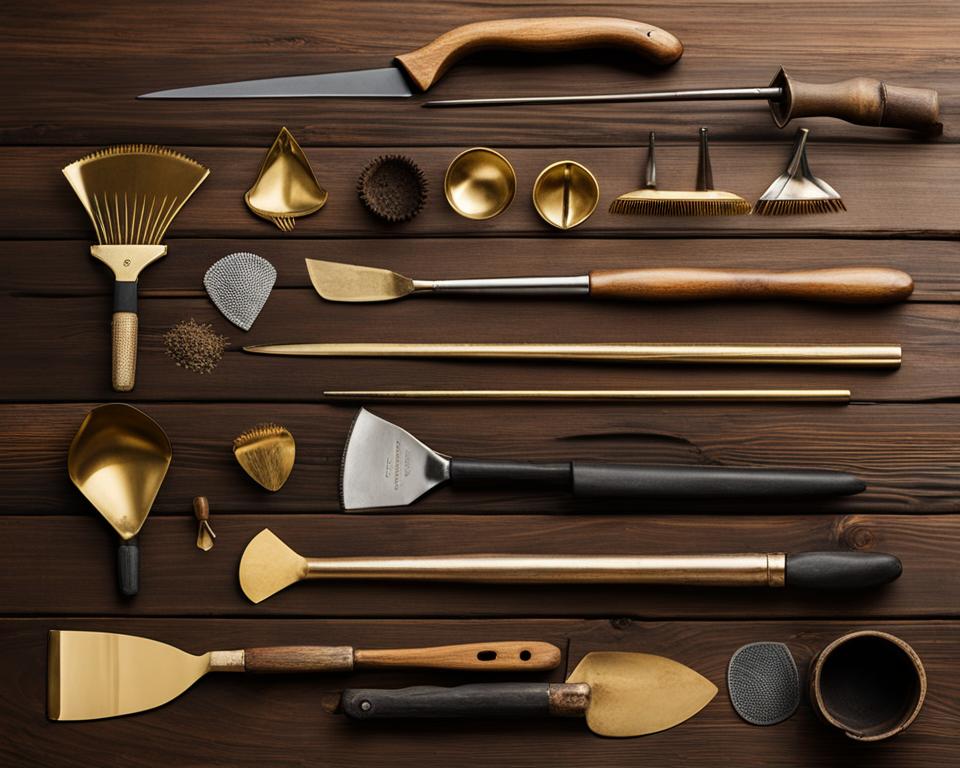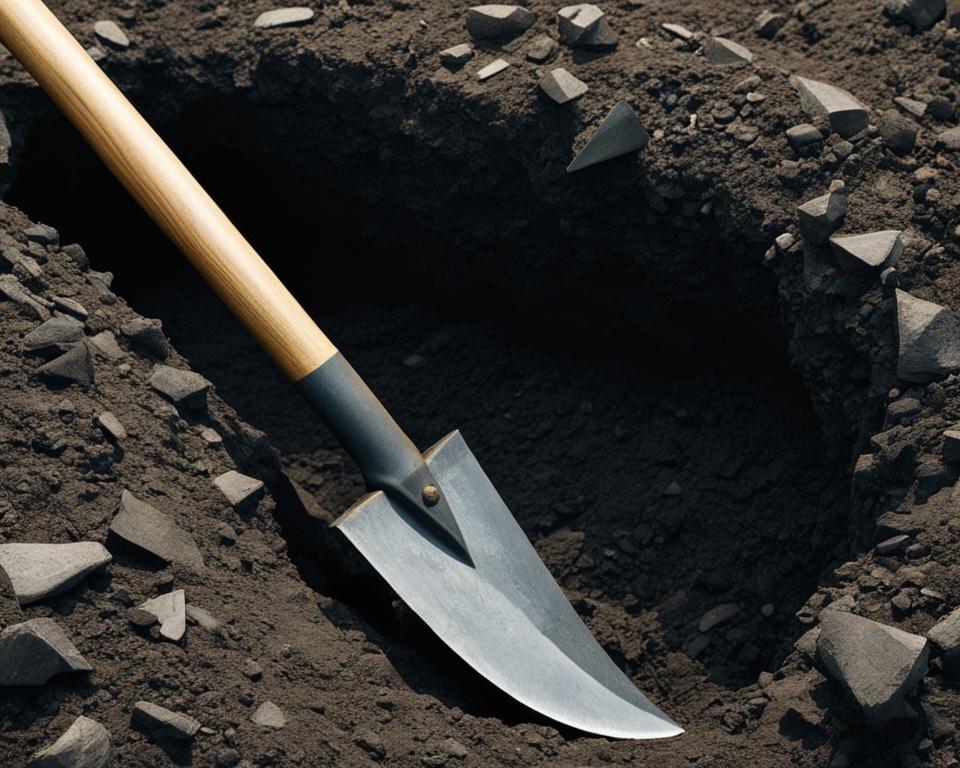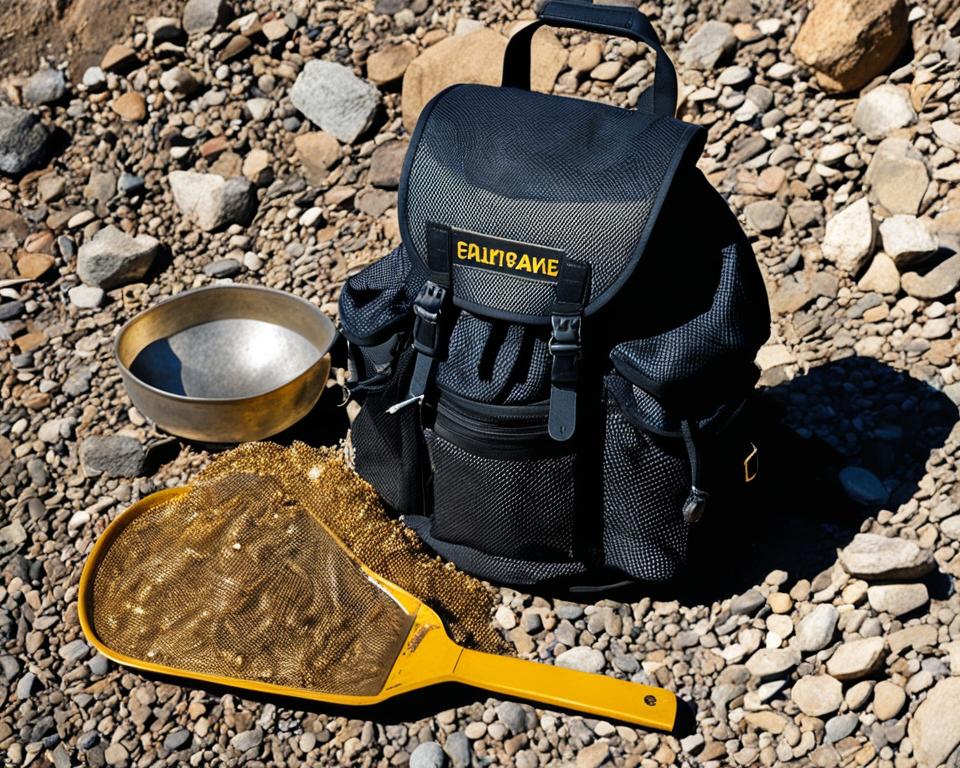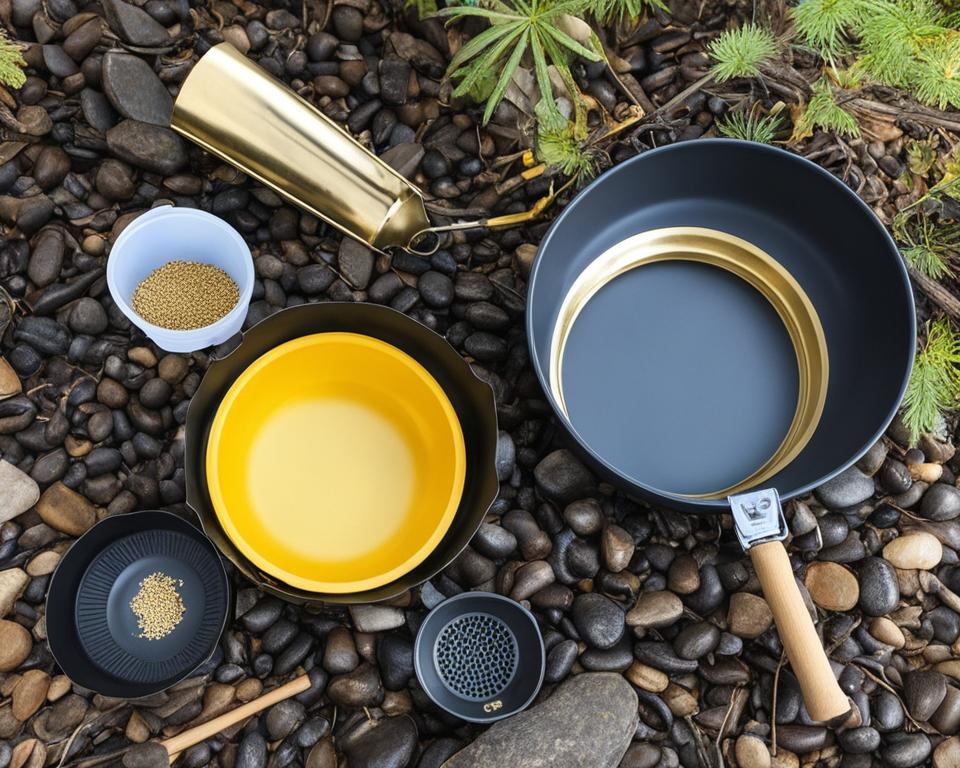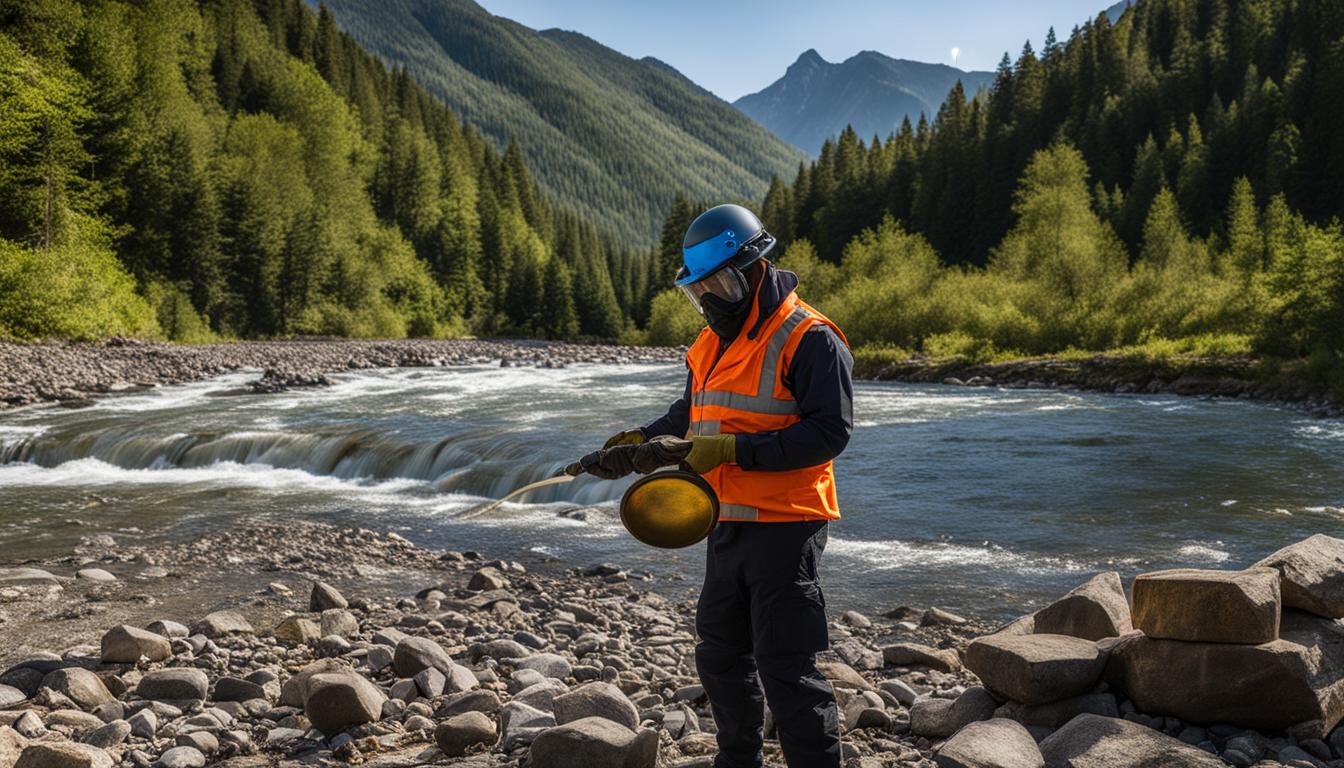
Gold panning is a thrilling activity that allows you to embark on a treasure hunt and potentially discover valuable treasures. But amidst the excitement, it is crucial to prioritize safety to ensure a smooth and secure gold panning experience.
Whether you are a beginner or an expert, following the right safety measures and using the appropriate equipment is essential. This article will guide you through the best practices for staying safe while gold panning and provide you with expert advice to ensure your well-being during your adventurous quests.
Key Takeaways:
- Safe gold panning techniques are crucial for an enjoyable experience.
- Take the necessary precautions and use proper safety equipment.
- Stay informed about weather conditions before heading out.
- Carry a well-stocked first aid kit to address minor injuries.
- Inform someone about your gold panning plans for added security.
The Importance of Checking the Weather
When it comes to gold panning, checking the weather before you start is crucial for your safety. Unpredictable weather conditions can pose significant risks to your well-being. Thunderstorms, lightning, and other hazardous weather events can suddenly occur, putting you in harm’s way. By staying informed about the weather forecast, you can reduce the risk of encountering dangerous situations and ensure a safer gold panning experience.
Before heading out, take a moment to check the local weather forecast. Look for any potential thunderstorm warnings or severe weather advisories in the area. Pay attention to the predicted wind speeds, as strong gusts can create hazardous conditions, especially near bodies of water.
If thunderstorms are expected, it’s advisable to postpone your gold panning adventure. Lightning is a significant safety concern, and being in an open area during a thunderstorm increases the risk of being struck. Additionally, seek shelter immediately if you hear thunder or see lightning in the distance. Take cover in a sturdy building or a fully enclosed metal vehicle until the storm passes.
In case you’re already out gold panning and notice the weather conditions deteriorating, prioritize your safety and seek shelter immediately. Find a low-lying area away from tall trees and bodies of water. Avoid taking shelter under lone trees or tall objects that may attract lightning. If you’re near a vehicle, it can provide a safe haven during a storm, as long as you don’t touch metal surfaces inside.
Remember, you can always resume your gold panning adventure once the weather clears up. Prioritizing your safety by checking the weather and adjusting your plans accordingly is essential for an enjoyable and risk-free experience.
Key Takeaways:
- Check the weather forecast before gold panning to reduce the risk of encountering dangerous conditions.
- Postpone your gold panning trip if thunderstorms or severe weather are expected.
- Take shelter immediately if you hear thunder or see lightning while gold panning.
- Seek shelter in a sturdy building or a fully enclosed metal vehicle during a thunderstorm.
- Resume gold panning once the weather clears up and the conditions are safe.
| Weather Tips | Actions |
|---|---|
| Check the weather forecast | Stay informed about potential hazards |
| Postpone trip | If thunderstorms or severe weather are expected |
| Take shelter | During thunderstorms or when weather conditions deteriorate |
| Find low-lying area | Away from tall trees and bodies of water |
| Avoid touching metal surfaces | When taking shelter in a vehicle |
Carrying a First Aid Kit
While gold panning may not seem like a risky activity, accidents can still happen. It’s important to be prepared by carrying a basic first aid kit with you. A well-stocked first aid kit can help you address minor injuries, such as cuts or scrapes, while you’re out in the field. It’s also crucial to consult with your doctor and ensure that you have any necessary prescription medications accessible in case of an emergency.
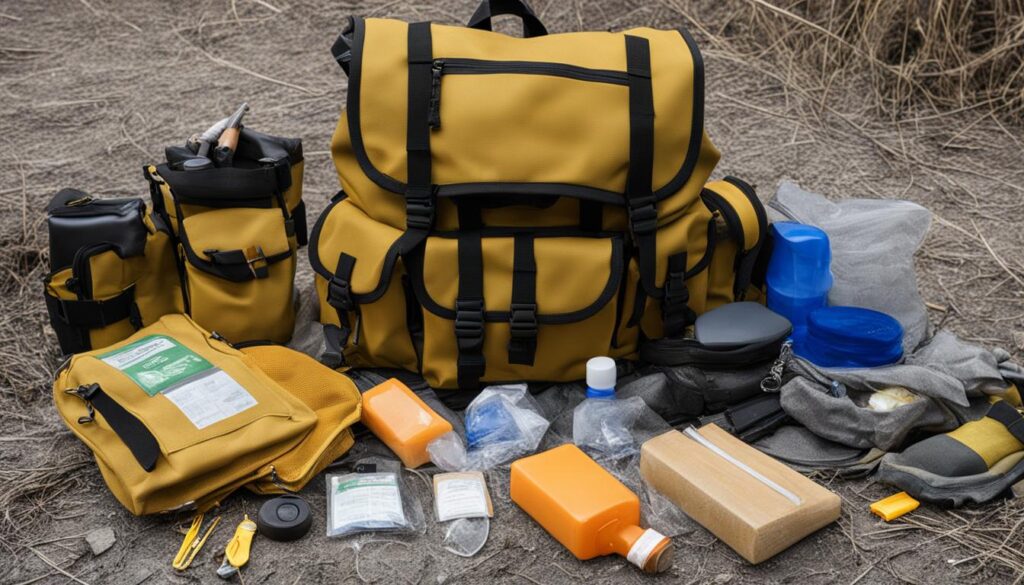
When it comes to gold panning safety, having a first aid kit is a must. You never know when an accident or injury may occur, even during a seemingly harmless activity like gold panning. By carrying a well-equipped first aid kit, you can promptly address any minor injuries that may occur, such as cuts, scrapes, or small burns.
Here are some essential items that your first aid kit should include:
- Bandages (various sizes)
- Gauze pads and adhesive tape
- Antiseptic wipes or solution
- Tweezers (for removing splinters)
- Pain relievers (such as ibuprofen or acetaminophen)
- Antihistamines (for allergic reactions)
- Disposable gloves
- Scissors
In addition to these basic supplies, it’s important to customize your first aid kit based on your specific needs and any pre-existing medical conditions you may have. For example, if you have allergies, including an epinephrine auto-injector (such as an EpiPen) in your kit can be life-saving if you experience a severe allergic reaction.
Expert Tip: Consult with your doctor before heading out for a gold panning adventure. They can provide expert advice on any specific medications or medical equipment you may need to include in your first aid kit, based on your individual health conditions.
Remember to periodically check your first aid kit to ensure that all supplies are up to date, and replace any expired items. This way, you’ll always be prepared to address minor injuries or medical emergencies that may arise during your gold panning expeditions.
Informing Someone About Your Plans
When it comes to gold panning, safety should always be a top priority. One important safety measure that is often overlooked is informing someone about your gold panning plans. Whether you’re heading to remote areas or going with a group, letting someone else know your location and expected duration of your trip can greatly enhance your safety.
In the event that you get lost or encounter any problems, having someone who knows where to search for you and can send help if needed can make a significant difference. It’s always better to be safe than sorry, so take the time to inform a trusted friend or family member about your gold panning adventure.
By following this simple step, you can ensure that someone is aware of your whereabouts and can assist you if needed. Remember, safety is paramount, and taking proactive measures like informing someone about your plans can go a long way in ensuring a safe and enjoyable gold panning experience.
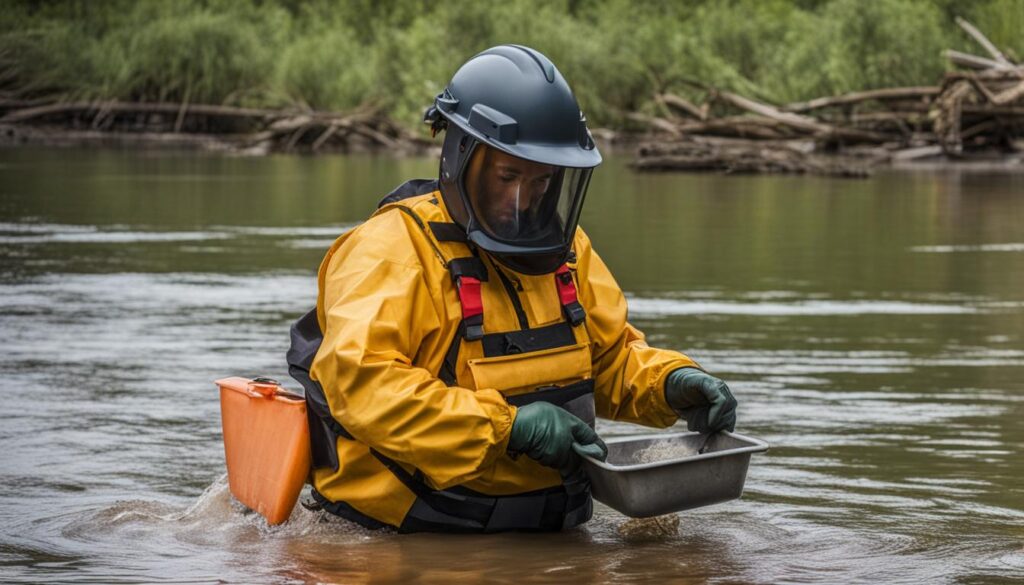
Key Points:
- Inform a trusted friend or family member about your gold panning plans
- Provide them with details of your location and expected duration of the trip
- In case of emergencies or getting lost, they can send help and assist in locating you
Remember, gold panning is an adventure that should be enjoyed safely. Taking the time to inform someone about your plans can provide you with an extra layer of security and peace of mind.
Staying Hydrated and Nourished
When embarking on a gold panning adventure, it is crucial to prioritize your health and well-being. Staying hydrated and nourished is essential, especially when panning for gold in hot weather conditions.
Bring plenty of drinks and snacks to keep yourself hydrated and maintain the energy needed to sustain this exciting activity. Non-perishable snacks like energy bars are convenient options to have on hand, ensuring you have a ready supply of sustenance while out in the field. Hydration and proper nutrition play a vital role in preventing dizziness, fatigue, and other health issues, ensuring a safer and more enjoyable gold panning experience.
Hydration Tips:
- Carry an adequate supply of water or electrolyte drinks to stay hydrated throughout your gold panning journey.
- Drink regularly, even if you don’t feel thirsty, as thirst is not always an accurate indicator of dehydration.
- Avoid excessive intake of caffeine or alcoholic beverages, as they can contribute to dehydration.
Nutrition Tips:
- Pack nutritious snacks like trail mix, granola bars, or dried fruits to fuel your body with the necessary nutrients and maintain energy levels during long hours of gold panning.
- Consider a balanced meal or a satisfying sandwich to keep your energy levels stable and enhance your overall gold panning experience.
- Consult with a healthcare professional for any specific dietary needs or recommendations based on your personal health conditions.
By prioritizing hydration and nourishment, you are proactively ensuring your safety while gold panning. Remember, a well-nourished body is better equipped to handle the physical demands of this exhilarating activity.
Being Prepared with Navigation Tools
When embarking on gold panning adventures in remote areas, it is crucial to be prepared with the right navigation tools to ensure your safety and prevent getting lost. While modern technology like GPS and cell phones can be helpful, relying solely on them can be risky, especially in areas with unreliable cellular service.
One of the essential navigation tools you should always bring is a map. A detailed map of the gold panning area can provide valuable information about the terrain, water bodies, and potential hazards. It can help you plan your route and make informed decisions about where to set up your gold panning equipment.
Another important tool is a compass. Even though compasses may seem old-fashioned compared to GPS devices, they are reliable and do not require batteries or a signal. A compass can help you determine your direction and guide you back to your starting point or a known landmark if you get disoriented.
By having a backup plan with traditional navigation tools like a map and compass, you can navigate remote gold panning areas confidently and stay on track. These tools are invaluable when technology fails or when you need to explore off-the-beaten-path locations that may not be accurately marked on GPS maps.
Remember to familiarize yourself with map reading and compass navigation techniques before your gold panning adventure. Practice using these tools in familiar areas to build confidence and enhance your navigation skills. Additionally, make sure to pack your map and compass securely, preferably in a waterproof container or bag, to protect them from damage.
Stay safe while gold panning by being prepared with navigation tools that do not rely solely on modern technology. With a map and compass in hand, you can confidently navigate remote areas, find your way back, and enjoy a successful and safe gold panning experience.
| Navigation Tools | Advantages |
|---|---|
| Map |
|
| Compass |
|
Protecting Yourself from Insects and Wildlife
When engaging in gold panning activities, it’s important to take precautions to protect yourself from insects and potential wildlife encounters. In gold panning areas, insects like mosquitoes and ticks can be quite common and can make your experience unpleasant. Additionally, there is always the possibility of coming across wildlife such as bears or venomous snakes. By following these safety measures, you can minimize the risk of insect bites and wildlife encounters, ensuring a safer gold panning adventure.
To protect yourself from insects, it’s recommended to use insect repellent with DEET. Apply it to exposed skin, including your hands, face, and neck, to ward off mosquitoes and ticks. It’s also a good idea to wear long sleeves and pants, preferably light-colored, to minimize insect exposure. After your gold panning session, thoroughly check your body and clothing for ticks and remove them promptly. This will help prevent the transmission of tick-borne illnesses.
When it comes to wildlife encounters, staying alert and aware of your surroundings is essential. Make noise periodically as you move around to alert any nearby wildlife of your presence, helping to avoid surprising them. If you encounter a bear, avoid direct eye contact, speak calmly and firmly, and slowly back away without turning your back on the bear. Be prepared to use bear spray if necessary. In the case of venomous snakes or other potentially dangerous wildlife, maintain a safe distance and do not provoke or approach them.
Remember, your safety is paramount during gold panning adventures. By taking these important safety measures and being aware of your surroundings, you can enjoy your gold panning experience with peace of mind, minimizing the risks associated with insects and wildlife encounters.
| Insect Protection | Wildlife Encounters |
|---|---|
|
|
Conclusion
Gold panning is an exciting and fulfilling activity that allows you to connect with nature and potentially uncover valuable treasures. However, safety should always be your top priority. By adhering to the recommended safety measures and using the proper equipment, you can ensure a secure and enjoyable gold panning adventure.
Before embarking on your gold panning journey, always check the weather forecast to avoid potential hazards like thunderstorms or extreme heat. Carry a well-stocked first aid kit to address any minor injuries that may occur along the way. Inform a trusted friend or family member about your plans, including your location and anticipated duration, in case of emergencies.
Staying hydrated and nourished is crucial to maintain your energy levels and prevent dehydration. Always bring ample water and non-perishable snacks like energy bars. Additionally, be prepared with navigation tools such as a map and compass to avoid getting lost, especially in remote areas with unreliable cellular service. Protect yourself from insects and wildlife by using insect repellent, wearing protective clothing, and staying alert.
Remember, a safe gold panning experience is a successful gold panning experience. Take the necessary precautions, stay informed, and enjoy the thrill of gold panning while safeguarding your well-being. Happy panning!
Source Links
- https://www.treelinereview.com/learn-skills/get-started-gold-prospecting
- https://www.ncbi.nlm.nih.gov/pmc/articles/PMC4978203/
- https://megalocators.com/safety-tips-for-gold-prospecting/

Meet Ryan Conlon, the passionate owner and driving force behind Pan for Treasure.
With an unwavering love for the art of gold panning, Ryan has transformed his enthusiasm into a thriving community hub for fellow treasure seekers. [email protected]
A seasoned gold panning enthusiast, Ryan’s journey began with a simple pan and a dream, evolving into a deep appreciation for the history, geology, and thrill of uncovering precious metals.


